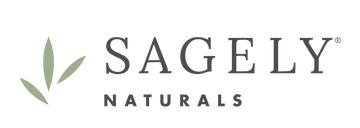Hemp is one of the strongest natural fibers in the world—an incredibly versatile plant that has been revered for its commercial, medicinal, and spiritual value since as early as 2737 B.C. But how can one plant have a seemingly limitless potential and be so diverse in its applications? From stalk to flower, here’s a quick visual tour of the anatomy of the hemp plant:

Image source: Leafly.com
Hemp Stalk Fibers & Hurds
The hemp stalk and hurd (the inner woody part of the stalk) are tall and strong with some variations of hemp growing up to ten feet tall. When harvested correctly, the stalk fibers and hurds are said to be even stronger than steel! This part of the hemp plant is commonly used in textile production (clothing, upholstery, shoes) as well as for animal bedding, hempcrete (building material), biofuel, and paper.
Hemp Seeds
Hemp seeds are used either in their whole form, shelled/hulled, or pressed (for their oil); here are their most common uses:
- As a Health Food—Hemp has a robust nutritional profile with its seeds high in essential fatty acids, B vitamins, protein, unsaturated fats, fiber, and minerals. The seeds can be consumed raw, sprouted, or in powder form (think salads, smoothies, and baked goods!).
- For Skin Health—Oil from the hemp seed is extremely moisturizing, conditioning and protecting (due to the linoleic and oldie acids and omegas) which makes it ideal for healthy skin and is the reason why it’s also the base of our own CBD cream.
- In Animal Feed—Much of the commercial animal feed on offer has very little nutrition for our furry friends. Hemp seed animal feed means they can also benefit from the full nutritional benefits like protein, essential vitamins and minerals.
Hemp’s Flowering Buds
The beautiful flowering buds at the end of the hemp plant are where we find cannabinoids (like CBD)—they have a very sticky resin and are found in parts of the flower including the cola, stigma and pistil, bract and calyx, and trichomes. Some of the most common uses of cannabinoids include targeting temporary, occasional discomfort and to facilitate relaxation.
There’s no question that the hemp plant wins MVP for strongest and most useful natural fiber with its thousands (some say upwards of 50,000!) of uses. But with the cannabis space continuing to power ahead, understanding which parts of the hemp plant do what will give you a helpful advantage to more easily navigate the fast-expanding array of hemp products on offer.





Leave a comment